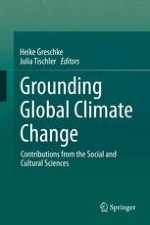2015 | OriginalPaper | Buchkapitel
5. Climate and Mobility in the West African Sahel: Conceptualising the Local Dimensions of the Environment and Migration Nexus
verfasst von : Clemens Romankiewicz, Martin Doevenspeck
Erschienen in: Grounding Global Climate Change
Verlag: Springer Netherlands
Aktivieren Sie unsere intelligente Suche, um passende Fachinhalte oder Patente zu finden.
Wählen Sie Textabschnitte aus um mit Künstlicher Intelligenz passenden Patente zu finden. powered by
Markieren Sie Textabschnitte, um KI-gestützt weitere passende Inhalte zu finden. powered by
